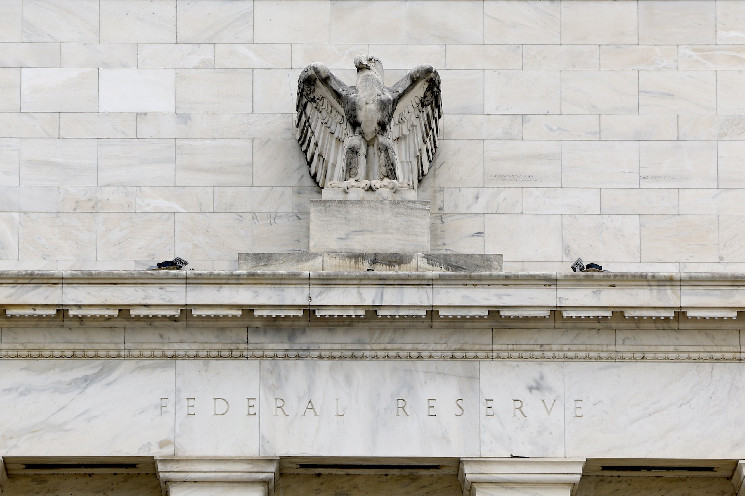Stablecoin legislation has been on the cusp of enactment for what seems like ages. The latest effort is Ranking Member of the House Financial Services Committee Maxine Waters’ (D-CA) renewed desire to reach a “grand bargain” with Committee Chair Patrick McHenry (R-NC) to get a bill over the finish line before year end.
It’s an open question whether the Senate would take up the issue, but Sen. Bill Hagerty (R-TN) recently floated a bill that could serve as the Senate companion to a House effort, or at least provide a starting point for new discussions.
The exact contours of a regulatory framework that could garner sufficient legislative support remain to be seen, but proposed approaches have coalesced around giving the Board of Governors of the Federal Reserve System a significant role in regulating stablecoin issuers. Unfortunately, that’s the wrong approach.
Jennifer J. Schulp is the director of financial regulation studies at the Cato Institute’s Center for Monetary and Financial Alternatives. Jack Solowey is a policy analyst at the center.
There is widespread agreement that legislation is necessary to address stablecoins—crypto tokens that are pegged to the value of another asset, like the U.S. dollar. The general idea behind these tokens is that their stable value will promote their use as a digital medium of exchange. Indeed, stablecoin use has been growing globally, with uses including cross-border payments and remittances, as well as facilitating crypto trading. Because transactions with stablecoins can settle nearly instantaneously, some view them as improvements to existing payment rails (which are slower and more costly).
This innovation—particularly in an uncertain, and sometimes downright hostile, regulatory environment—would benefit from a clear framework that addresses the limited risks stablecoins pose. For stablecoins backed by assets, the biggest risk is that the token is not, in fact, stable. In other words, the risk is that the issuer does not have the assets it claims to have backing the token. The Fed is poorly suited to overseeing a regulatory regime designed to address this risk.
First, and perhaps foremost, the Fed would be conflicted. As an alternative payment service, stablecoins compete with the Fed’s own payment infrastructure, including FedNow, the central bank's instant payment service. The Fed’s consideration of a central bank digital currency would leave it further conflicted when regulating privately issued stablecoins, as those two digital representations of the dollar can be seen as substitutes. Any government body, the Fed included, would struggle to objectively analyze private payment innovations that compete with its own services. Giving the Fed the authority to regulate stablecoins unfairly stacks the deck against payment alternatives. Simply put, the fox shouldn’t be allowed to guard the henhouse.
If the obvious—and irremediable—conflicts of interest were not enough, the Fed shouldn’t be tasked with stablecoin regulation because it isn’t well-suited to the task. The Fed is a monetary policy specialist that already struggles with its regulatory responsibilities for bank regulation. Giving the Fed regulatory authority over stablecoin issuers doubles down on this failing framework, potentially resulting in subpar regulation of the sector and running the risk of distracting the Fed from its already (overly) ambitious statutory responsibilities.
Moreover, the bank regulatory framework that the Fed is most familiar with is not right for stablecoin regulation. Issuers of fully backed stablecoins should not be treated as if they were fractional reserve banks. The ”financial stability” concerns that lead regulators to consider bank-like regulations for stablecoins are misplaced.
Stablecoin issuers provide a payment tool, not banking services. The main risk for a stablecoin is that it will lose 1:1 redeemability with the asset it’s pegged to, such as the U.S. dollar, because the issuer doesn’t have the reserves it claims to. Basic requirements around collateral and disclosures subject to anti-fraud authority would directly address this. Other regulators are better suited to oversee such a regime, including those more familiar with disclosure-based regulation.
Congress should be applauded for engaging on stablecoin regulation. But such a framework should not give substantial regulatory authority to the Fed, which would lay the groundwork for regulatory decision-making that could decrease competition. If the Fed must remain involved, Congress can mitigate—but not eliminate—the risks by reducing any discretion granted to the Fed and by narrowly focusing any regulatory regime on disclosures regarding reserves and restrictions on appropriate collateral.
Stablecoins offer the promise of faster, cheaper digital payments. But a Fed-heavy regulatory regime would place private stablecoins at a disadvantage, hindering this innovative technology's potential.
Note: The views expressed in this column are those of the authors and do not necessarily reflect those of CoinDesk, Inc. or its owners and affiliates.
 coindesk.com
coindesk.com
